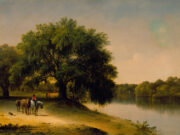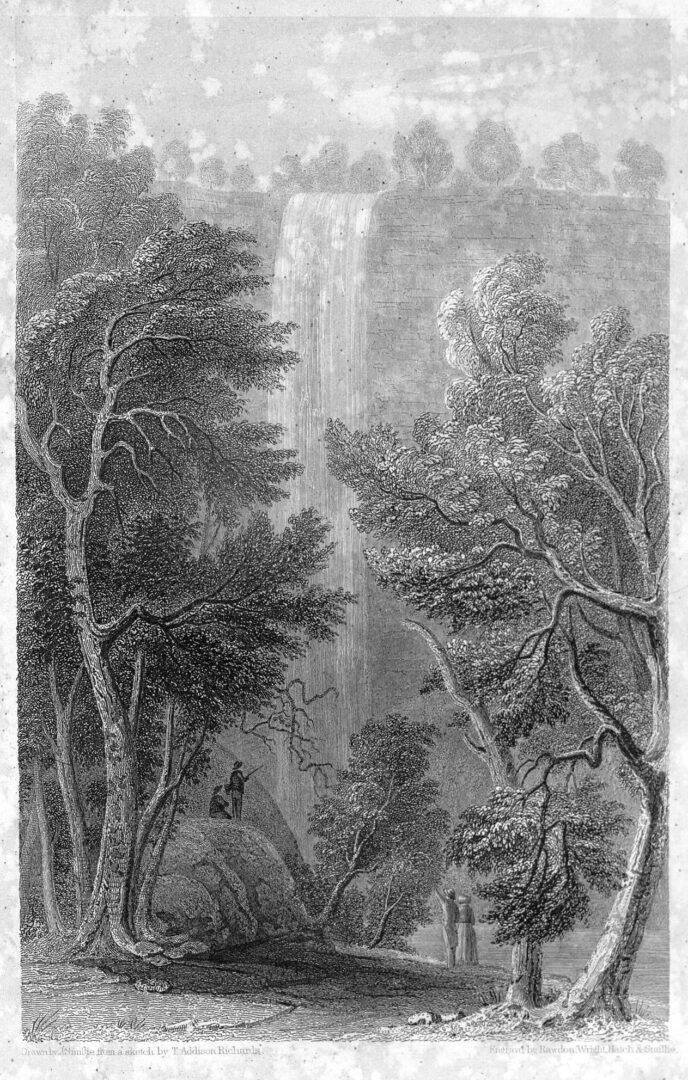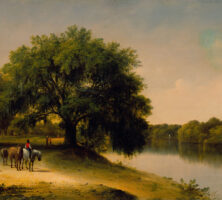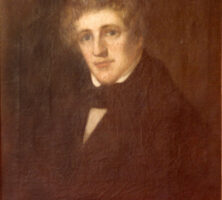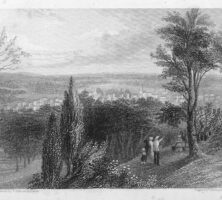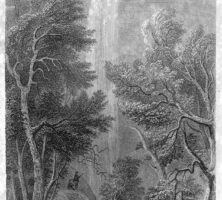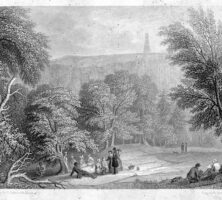During the first half of the nineteenth century artists fanned out across the northeastern United States to find aesthetic inspiration in nature. Thomas Addison Richards was one of the few who traveled extensively in the South. Through his paintings, illustrated magazine articles, and guidebooks, Richards introduced the natural beauty and distinct characteristics of this region to a national audience.
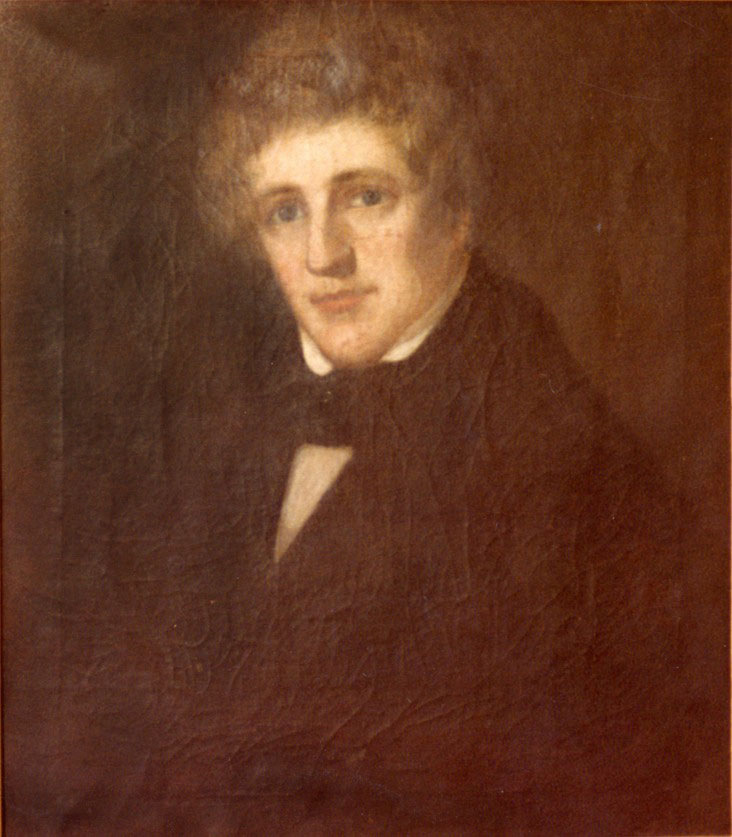
Courtesy of Madonna Owen Bryans (Mrs. C. I. Bryans Jr.)
Richards was born in London, England, on December 3, 1820, to Ann and William Richards. The family immigrated to America in 1831, moving first to Hudson, New York, and then to Charleston, South Carolina. Around 1837 they settled in the small town of Penfield, Georgia, in Greene County, the original site of Mercer University, where Richards’s father, a Baptist minister, served as a charter trustee. In 1838 the young Richards left for Augusta, where for the next two years he offered lessons in painting and drawing and contributed travelogues about his rambles around Georgia to the Augusta Mirror, a local literary magazine.
In 1841, sketchbook in hand, he left Augusta to travel around the South in search of picturesque scenes. The following year Richards and his brother, William Cary Richards, published Georgia Illustrated, which featured eleven steel engravings after Richards’s closely observed topographical drawings. The brothers then collaborated on the Orion (1842-44), a monthly literary journal published in Penfield and printed in New York, for which Richards supplied stories and illustrated travel essays.
Late in 1844 Richards settled permanently in New York City, where he gave art lessons from his studio and began taking classes at the National Academy of Design. He subsequently became a full academician and served as the institution’s corresponding secretary from 1852 to 1892. Many of the paintings he regularly contributed to academy exhibitions were romantic landscapes of the South.
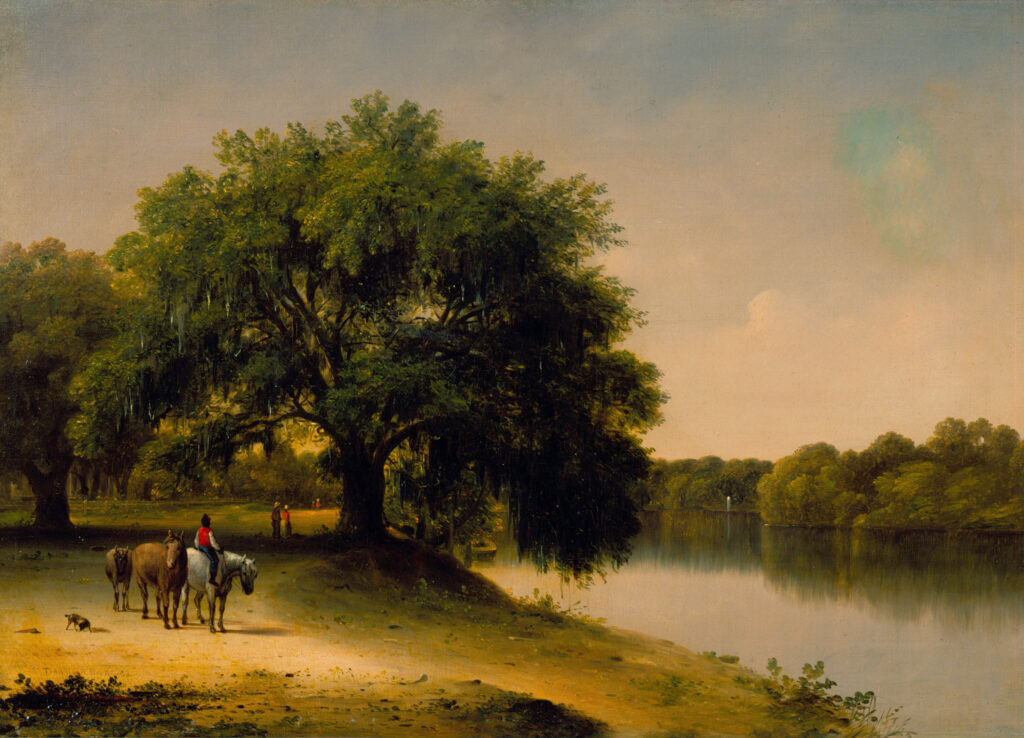
Courtesy of Morris Museum of Art
Throughout the 1850s Richards penned numerous articles and books. He supplied illustrated articles based on his travels around the Northeast to Graham’s Magazine (Philadelphia) and the Knickerbocker (New York). For the weekly Southern Literary Gazette, published by his brother out of Athens, Georgia, and Harper’s New Monthly Magazine (New York), he submitted essays on his travels through the South. Richards enlivened his travelogues with personal anecdotes, legendary stories, tips on lodging, and engravings after his on-site drawings. Tallulah and Jocasse, a collection of Richards’s short stories about the South named for two waterfalls in north Georgia, one being the famed Tallulah Falls, once known as the “Niagara of the South,” was published in 1852. In 1854 a series of engravings after Richards’s southern sketches appeared in Romance of American Landscape.
By this time a highly regarded chronicler of the American scene, Richards became, in 1857, the editor of the first major guidebook to the United States and Canada. Appleton’s Illustrated Hand-book of American Travel included information on major cities, popular vacation sites, maps, transportation routes, and hotels, and featured engravings made from illustrations by Richards and others.
In 1857 Richards married Mary E. Anthony, an author of children’s stories. Thereafter, Richards concentrated on teaching and painting. He served as the first director of the Cooper Union School of Design for Women in New York, a position he held from 1858 to 1860, and taught at New York University from 1867 to 1887. At the National Academy and Brooklyn Art Association he exhibited still lifes and landscapes, often of tranquil southern scenes. Richards died on June 28, 1900, in Annapolis, Maryland.
The Morris Museum of Art in Augusta is one of several American museums that own and display his artwork.


